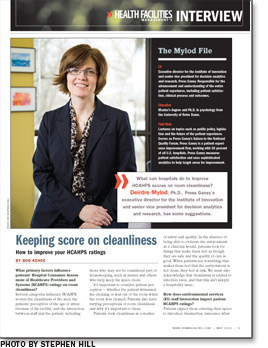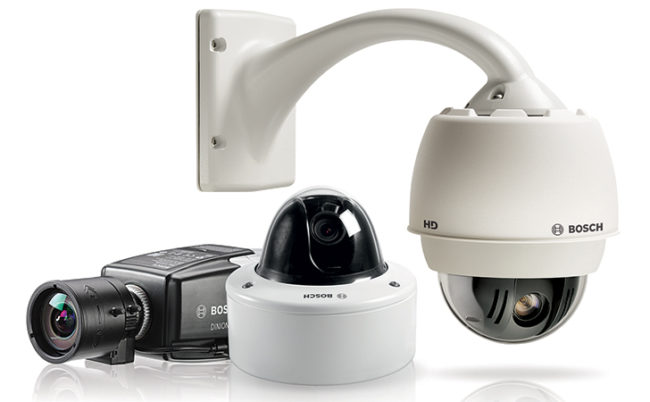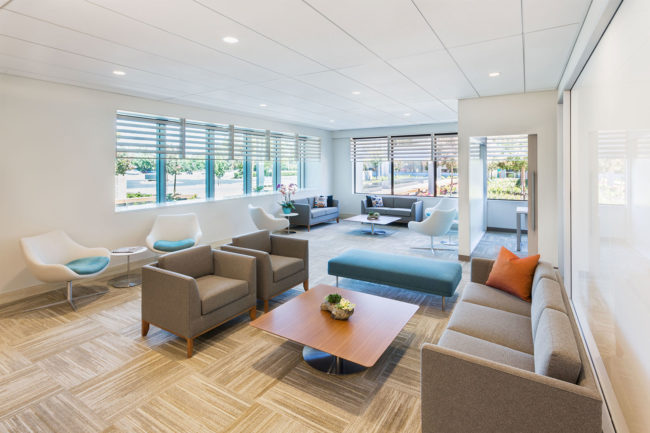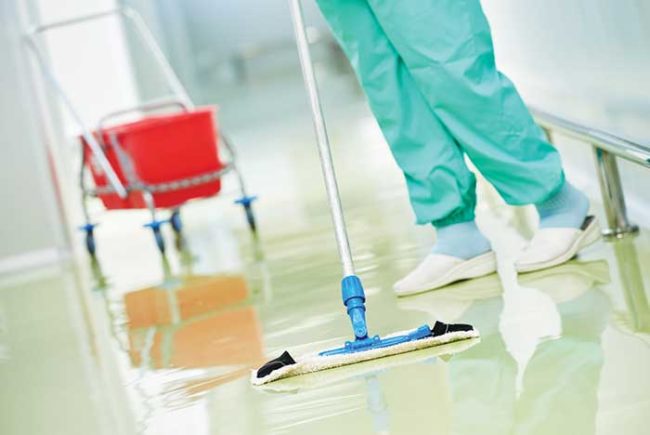 What can hospitals do to improve HCAHPS scores on room cleanliness? Deirdre Mylod, Ph.D., Press Ganey's executive director for the Institute of Innovation and senior vice president for decision analytics and research, has some suggestions.
What can hospitals do to improve HCAHPS scores on room cleanliness? Deirdre Mylod, Ph.D., Press Ganey's executive director for the Institute of Innovation and senior vice president for decision analytics and research, has some suggestions.
What primary factors influence patients' Hospital Consumer Assessment of Healthcare Providers and Systems (HCAHPS) ratings on room cleanliness?
Several categories influence HCAHPS scores: the cleanliness of the area; the patients' perception of the age or attractiveness of the facility; and the interaction between staff and the patient, including those who may not be considered part of housekeeping, such as nurses and others who help keep the space clean.
| HFM Web Exclusive |
|
Those things that go bump in the night, or squeak and beep, may not only drive patients nuts, they may be driving hospital revenue down. Noise in and around the patient room remains one of the most vexing problems for hospital HCAHPS scores. Running time: 3:43. |
It's important to consider patient perception — whether the patient witnessed the cleaning or was out of the room when the room was cleaned. Patients also have varying perceptions of room cleanliness and why it's important to them.
Patients view cleanliness as a marker of safety and quality. In the absence of being able to evaluate the environment as a clinician would, patients look for things that make them feel as though they are safe and the quality of care is good. When patients see something that makes them feel that the environment is not clean, they feel at risk. We must also acknowledge that cleanliness is related to infection rates, and that this isn't simply a hospitality issue.
How does environmental services (ES) staff interaction impact patient HCAHPS ratings?
Patients expect those entering their space to introduce themselves, announce what they are there to do and then do it. Thus, training needs to enable staff to feel comfortable having a brief interaction with the patient — to knock, ask permission to come in, say "Hello" and introduce themselves and to say why they are there.
This often requires role-playing and preparing staff to be able to handle a difficult patient situation. For example, if a patient wants to voice a complaint, a staff member may be afraid and want to avoid contact.
Do Press Ganey data show whether communication training is successful?
We have several case studies showing that when organizations go through that process, it changes the way patients perceive the cleanliness of the organization — even if the organization's processes or the physical environment remains unchanged. So, a more comfortable interaction does translate into higher scores.
Some organizations make sure that patients regularly see ES staff clean the high-touch areas. Other tactics include changing the frequency with which environmental services cleans the room.
The organizations that are most effective at dealing with cleanliness also expect that if the nursing staff see something that should be addressed, like an overflowing trash can or clutter on a patient's tray, that they address it.
How can hospitals improve the likelihood that patients will indicate on the survey that the room was "always" clean?
Organizations are not permitted to talk with patients about the survey in a way that implies that they're hoping for a particular evaluation. That would be against Centers for Medicare & Medicaid Services requirements.
But, there are things that can increase the likelihood that patients will perceive and rate their experiences highly.
Housekeeping staff should ask as they complete their work whether the room is cleaned to the patient's preferences and if there is anything else the patient would like to have done.
Housekeeping leaders should round on all patient floors at least weekly to seek feedback on whether rooms are being cleaned the way patients like and if there is any way to improve services.
It is critical that ES leaders articulate the interpersonal behaviors they expect of their staff and then perform rounding to hold them accountable.
How can staff members who have English as a second language communicate effectively with patients?
Even if someone is not comfortable having long conversations in English, he or she can gain experience in making eye contact, being friendly and interested in the patient and having some limited scripting to be able to interact with the patient. Or, if the patient is out of the room, a staff member can leave a card telling the patient the room has been cleaned.
If those general behaviors and accountabilities don't give organizations the results they want, they should dig into unit-specific information. You need enough data at the unit level to show how patients feel about cleanliness so you can make comparisons. Does it have something to do with the patient characteristics? In general, older patients tend to give more favorable evaluations of care while very young patients sometimes are less concerned about cleanliness.
Are there best practices for what should be communicated?
The litmus test is that the ES leader should be able to ask anyone in ES, "What are the three critical things you should do to establish rapport with a patient and in what behaviors should you engage?" If staff are unable to answer, it means you haven't created the behavioral standards nor the environment in which they will be held accountable to those standards.
Organizations also should pay attention to hand hygiene because while the patient's perception of cleanliness primarily is based on the physical environment, it's also based on the patient's perception of whether this is a clean place to be. Providing hand sanitizers on the patient's bed table or by his or her sink, and dovetailing this with other hand-hygiene activities, is important.
How can ES directors best monitor HCAHPS scores and address areas of concern?
The ES manager should look at the organization's score on room cleanliness and noise levels as close to real time as possible to see if the department is contributing to that effort. There should be dashboards that show staff how they are doing overall, what the scores were last week, last month, etc., and review any negative comments pertaining to the room.
Data should be segmented by unit because you may have some new wings with new equipment and a more streamlined environment. You might have some areas of the hospital with private rooms and other areas with semiprivate rooms.
All dashboard information should be pushed up to someone in the organization with a visual display of how they're doing so they can monitor progress or deficits in performance.
Does describing what's being done during cleaning enhance the patient's perception of cleanliness?
It does and there's an important distinction for staff because health care for a long time has talked about scripting. There's a nuance here that I would describe as verbalizing value.
Often patients don't see or understand what it is you're doing for them or don't understand the motivation behind it. If you can communicate that, it helps the patient to see the value.
Bob Kehoe is the associate publisher of Health Facilities Management.
| Sidebar - The Mylod File |
|
CV: Executive director for the Institute of Innovation and senior vice president for decision analytics and research, Press Ganey. Responsible for the advancement and understanding of the entire patient experience, including patient satisfaction, clinical process and outcomes. Education: Master's degree and Ph.D. in psychology from the University of Notre Dame. Field Work: Lectures on topics such as public policy, legislation and the future of the patient experience. Serves as Press Ganey's liaison to the National Quality Forum. Press Ganey is a patient experience improvement firm, working with 50 percent of all U.S. hospitals. Press Ganey measures patient satisfaction and uses sophisticated analytics to help target areas for improvement. |





